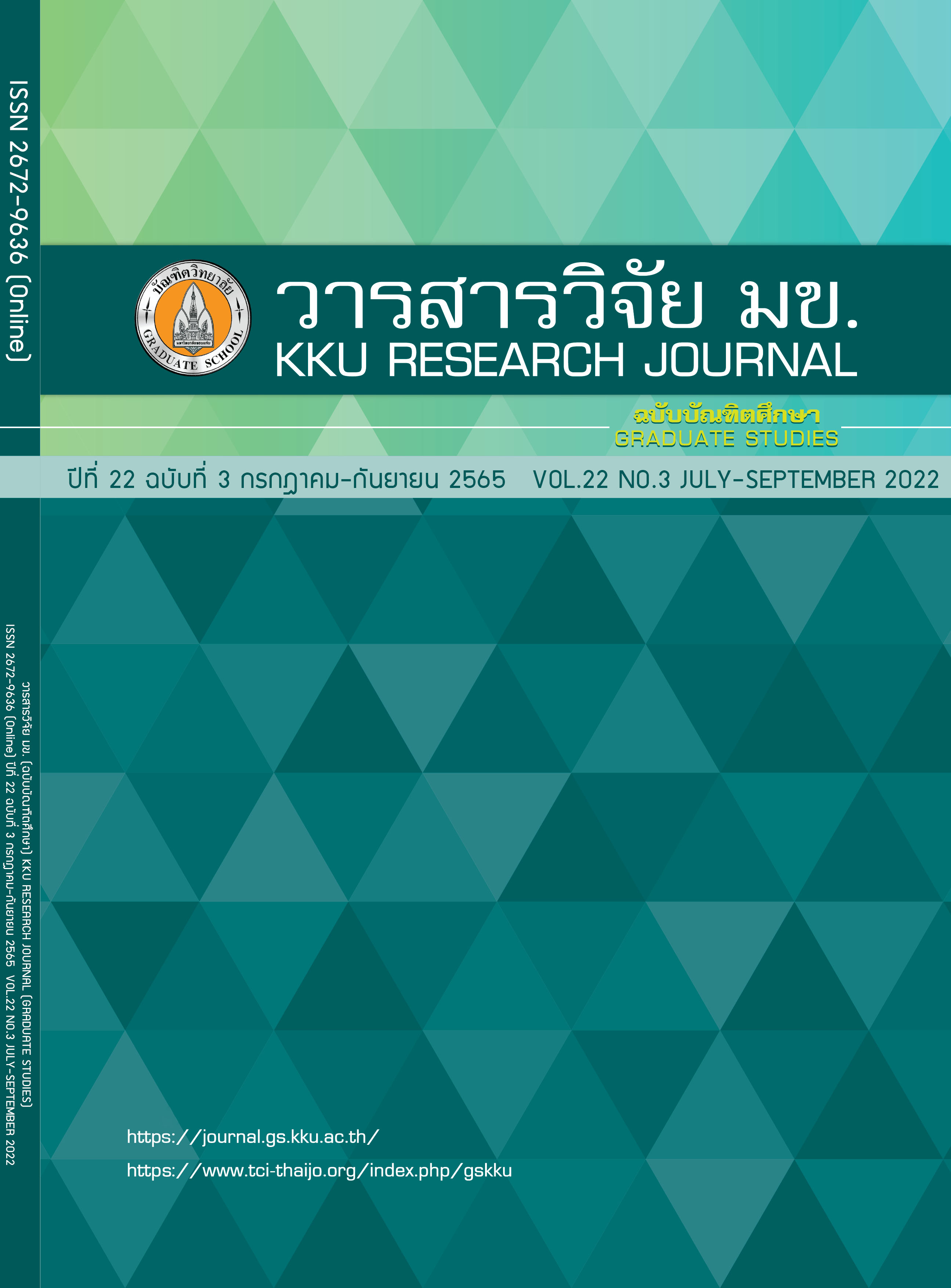Removal Efficacy of Reactive Textile Dyes by Cellulose Powder from Rice Straw
Keywords:
Cellulose powder, Rice straw, Reactive dyes, Dye removalAbstract
In this research, Cellulose powder was prepared by bleaching rice straw with 10% w/v H2O2 (CPR) to removal 3 reactive dyes (Blue G, Red SBN and Yellow RN). The optimum conditions for the dye adsorption were investigated including an adsorbent dosage, the concentration of 3 reactive dyes solution, the contact time and adsorption of mixed 3 dye solution. The adsorption isotherm and kinetics. It was found that the amount of CPR of 2.5 g contact time at 60 min the adsorption capacity of 3 reactive dyes the removal percentages were 91.37±0.20, 92.27±0.00 and 97.20±0.73 respectively. At the concentration of 3 reactive dyes solution 15 mg/L. In 15 mg/L adsorption of mixed 3 dyes solution, the color value after the adsorption was lower than 300 ADMI (standard value of wastewater industry). The Pseudo-Second Order model was applied for fitting experimental data of 3 dyes adsorption by CPR. The adsorption mechanism was consistent with Langmuir isotherm. Therefore, CPR could be used as alternative bio-adsorbent for reactive dyes removal in native textile dyes wastewater.
References
Announcement of the Ministry of Industry Subject: Determination of standard for control of factory effluent discharge [Internet] 2017 [updated 2017 Jun 7; cited 2020 Apr 12] Available from: https://www.diw.go.th/hawk/news/11.PDF
Sukadjasakul A. Dyea Removal from Doi Tung Development Project Textile Wastewater Utilizing Adsorbent from Water Hyacinth and Cyperus corymbosus Rottb [MSc thesis]. Bangkok: Kasetsart University; 2012. Thai.
Lellis B, Fávaro-Polonio C, Pamphile J, Polonio J. Effects of textile dyes on health and the environment and bioremediation potential of living organisms. Biotechnology Research and Innovation. 2019; 50: 1-16. Brazil.
Ruparseart P. The Utilization of Water Hyacinth Stem Bioadsorbent as Growing Material in Constructed Wetland Systems for Dyestuff Removal. [MSc thesis]. Bangkok: Kasetsart University; 2015. Thai.
Chaijumnong U, Tungkananuruk N, Tungkananuruk K. Treatment of Reactive Dyes in Wastewater from Native Textile House-Hold Factory by Using Constructed Filter Tank with Lignite Fly Ash Adsorbent. Thai Environmental Engineering Journal. 2017; 31(1): 45-57. Thai.
Chooaksorn W. Color Removal Technology in Industrial Wastewater. Burapha Sci. J. 2012; 17(1): 181-191. Thai.
Pimpa W, Pimpa C. Synthesis and utilization of the rice straw based adsorbents for wastewater treatment. Bangkok: Science and Technology Infrastructure Databank; 2015. Thai.
Sirianusornsak W, Sinbuathong N. Chemical pretreatment of rice straw for a raw material in the production of renewable energy. In: Proceedings of 51st Kasetsart University Annual Conference: Science, Natural Resources and Environment; 2013 Feb 5-7; Bangkok. The Thailand Research Fund, Bangkok (Thailand).
Maharatchamongkol K. The silane treatment on the surface of cellulose fiber from rice straw as a reinforced material in epoxy resin [MSc thesis]. Bangkok: Silpakorn University; 2015. Thai.
Sodsai K. Dyes Removal from Doi Tung Development Project Textile Wastewater by Hevea brasiliensis and Hevea brasiliensis Charcoal [MSc thesis]. Bangkok: Kasetsart University; 2012. Thai.
Lin L, Zhang Y, Xiu P, Xing C, Li J, Ju M. Adsorption Removal of Dyes from Single and Binary Solutions Using a Cellulose-based Bioadsorbent. ACS Sustainable Chemistry & Engineering. 2015; 3: 432-442. China.
Tungkananuruk N, Tungkananuruk K. Principle of chemical water quality analysis. 1th ed. Bangkok: KASETSART UNIVERSITY PRESS; 2007.
Downloads
Published
Issue
Section
License
Copyright (c) 2022 KKU Research Journal (Graduate Studies)

This work is licensed under a Creative Commons Attribution-NonCommercial-NoDerivatives 4.0 International License.



